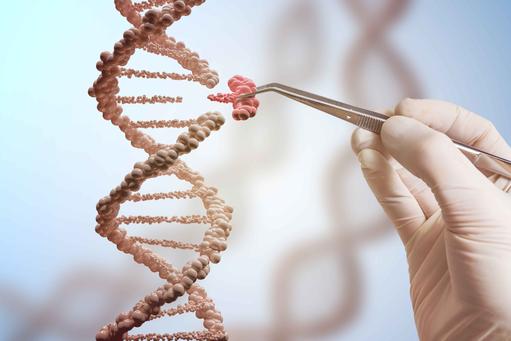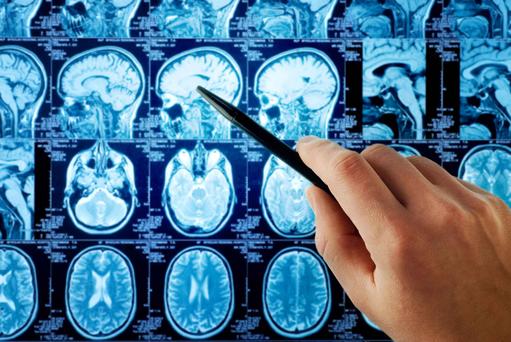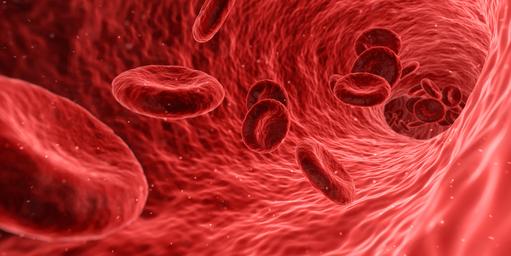- Competition is intensifying among scientists to develop and use gene editing and immunotherapy to defeat intractable diseases
- Chinese scientists were the first to inject people with cells modified by the CRISPR–Cas9 gene-editing technique
- Several studies have extracted a patient’s own immune cells, modified them using gene-editing techniques, and re-infused them into the patient to seek and destroy cancer cells
- A new prêt à l'emploi gene editing treatment disables the gene that causes donor immune cells to attack their host
- The technique harvests immune cells from a donor, modifies and multiplies them so that they may be used quickly, easily and cheaply on different patients
- Commercial, technical, regulatory and ethical barriers to gene editing differ in different geographies
Gene editing battles
Gene editing and immunotherapy are developing at a pace. They have been innovative and effective in the fight against melanoma, lung cancer, lymphomas and some leukaemias, and promise much more. Somatic gene therapy changes, fixes and replaces genes at the tissue or cellular levels to treat a patient, and the changes are not passed on to the patient’s offspring. Germ line gene therapy inserts genes into reproductive cells and embryos to correct genetic defects that could be passed on to future generations. Although there are still many unanswered clinical, commercial and ethical questions surrounding gene therapy, its future is assured and will be shaped by unexpected new market entrants and competition between Chinese and Western scientists, which is gaining momentum.
14 February 2017
On the 14th February 2017 an influential US science advisory group formed by the National Academy of Sciences and the National Academy of Medicine gave support to the modification of human embryos to prevent “serious diseases and disabilities” in cases where there are no other “reasonable alternatives”. This is one step closer to making the once unthinkable heritable changes in the human genome. The Report, however, insisted that before humanity intervenes in its own evolution, there should be a wide-ranging public debate, since the technology is associated with a number of unresolved ethical challenges. The French oppose gene editing, the Dutch and the Swedes support it, and a recent Nature editorial suggested that the EU is, “habitually paralysed whenever genetic modification is discussed”. In the meantime, clinical studies, which involve gene-editing are advancing at a pace in China, while the rest of the world appears to be embroiled in intellectual property and ethical debates, and playing catch-up.
15 February 2017
On the 15th February 2017, after a long, high-profile, heated and costly intellectual property action, judges at the US Patent and Trademark Office ruled in favor of Professor Feng Zhang and the Broad Institute of MIT and Harvard, over patents issued to them associated with the ownership of the gene-editing technology CRISPR-Cas9: a cheap and easy-to-use, all-purpose gene-editing tool, with huge therapeutic and commercial potential.
The proceedings were brought by University College Berkeley who claimed that the CRISPR technology had been invented by Professor Jennifer Doudna of the University, and Professor Emmanuelle Charpentier, now at the Max Planck Institute for Infection Biology in Berlin, and described in a paper they published in the journal Science in 2012. Berkeley argued that after the 2012 publication, an “obvious” development of the technology was to edit eukaryotic cells, which Berkeley claimed is all that Zhang did, and therefore his patents are without merit.
The Broad Institute countered, suggesting that Zhang made a significant inventive leap in applying CRISPR knowledge to edit complex organisms such as human cells, that there was no overlap with the University of California’s research outcomes, and that the patents were therefore deserved. The judges agreed, and ruled that the 10 CRISPR-Cas9 patents awarded to Zhang and the Broad Institute are sufficiently different from patents applied for by Berkeley, so that they can stand.
The scientific community
Interestingly, before the 15th February 2017 ruling, the scientific community had appeared to side with Berkeley. In 2015 Doudna, and Charpentier were awarded US$3m and US$0.5m respectively for the prestigious Breakthrough Prize in life sciences and the Gruber Genetics Prize. In 2017 they were awarded the Japan Prize of US$0.45m for, “extending the boundaries of life sciences”. Doudna and Charpentier have each founded companies to commercially exploit their discovery: respectively Intellia Therapeutic, and CRISPR Therapeutics.
16 February 2017
A day after the patent ruling, Doudna said: “The Broad Institute is happy that their patent didn’t get thrown out, but we are pleased that our patent based on earlier work can now proceed to be issued”. According to Doudna, her patents are applicable to all cells, whereas Zhang’s patents are much more narrowly indicated. “They (Zhang and the Broad Institute) will have patents on green tennis balls. We will get patents on all tennis balls,” says Doudna.
Gene biology
Gene therapy has evolved from the science of genetics, which is an understanding of how heredity works. According to scientists life begins in a cell that is the basic building block of all multicellular organisms, which are made up of trillions of cells, each performing a specific function. Pairs of chromosomes comprising a single molecule of DNA reside in a cell’s nucleus. These contain the blueprint of life: genes, which determine inherited characteristics. Each gene has millions of sequences organised into segments of the chromosome and DNA. These contain hereditary information, which determine an organism’s growth and characteristics, and genes produce proteins that are responsible for most of the body’s chemical functions and biological reactions.
Roger Kornberg, an American structural biologist who won the 2006 Nobel Prize in Chemistry "for his studies of the molecular basis of eukaryotic transcription", describes the Impact of human genome determination on pharmaceuticals:
China’s first
While American scientists were fighting over intellectual property associated with CRISPR-Cas9, and American national scientific and medical academies were making lukewarm pronouncements about gene editing, Chinese scientists had edited the genomes of human embryos in an attempt to modify the gene responsible for β-thalassemia and HIV, and are planning further clinical studies. In October 2016, Nature reported that a team of scientists, led by oncologist Lu You, at Ghengdu’s Sichuan University in China established a world first by using CRISPR-Cas9 technology to genetically modify a human patient’s immune cells, and re-infused them into the patient with aggressive lung cancer, with the expectation that the edited cells would seek, attack and destroy the cancer. Lu is recruiting more lung cancer patients to treat in this way, and he is planning further clinical studies that use similar ex vivo CRISPR-Cas9 approaches to treat bladder, kidney and prostate cancers
The Parker Institute for Cancer Immunotherapy
Conscious of the Chinese scientists’ achievements, Carl June, Professor of Pathology and Laboratory Medicine at the University of Pennsylvania and director of the new Parker Institute for Cancer Immunotherapy, believes America has the scientific infrastructure and support to accelerate gene editing and immunotherapies. Gene editing was first used therapeutically in humans at the University of Pennsylvania in 2014, when scientists modified the CCR5 gene (a co-receptor for HIV entry) on T-cells, which were injected in patients with AIDS to tackle HIV replication. Twelve patients with chronic HIV infection received autologous cells carrying a modified CCR5 gene, and HIV DNA levels were decreased in most patients.
Medical science and the music industry
The Parker Institute was founded in 2016 with a US$250m donation from Sean Parker, founder of Napster, an online music site, and former chairman of Facebook. This represents the largest single contribution ever made to the field of immunotherapy. The Institute unites 6 American medical schools and cancer centres with the aim of accelerating cures for cancer through immunotherapy approaches.
Parker, who is 37, believes that medical research could learn from the music industry, which has been transformed by music sharing services such as Spotify. According to Parker, more scientists sharing intellectual property might transform immunotherapy research. He also suggests that T-cells, which have had significant success as a treatment for leukaemia, are similar to computers because they can be re-programed to become more effective at fighting certain cancers. The studies proposed by June and colleagues focus on removing T-cells, from a patient’s blood, modifying them in a laboratory to express chemeric antigen receptors that will attack cancer cells, and then re-infusing them into the patient to destroy cancer. This approach, however, is expensive, and in very young children it is not always possible to extract enough immune cells for the technique to work.
Prêt à l'emploi therapy
Waseem Qasim, Professor of Cell & Gene Therapy at University College London and Consultant in Paediatric immunology at Great Ormond Street Hospital, has overcome some of the challenges raised by June and his research. In 2015 Qasim and his team successfully used a prêt à l'emploi gene editing technique on a very young leukaemia patient. The technique, developed by the Paris-based pharmaceutical company Cellectis, disables the gene that causes donor-immune cells to attack their host. This was a world-first to treat leukaemia with genetically engineered immune cells from another person. Today, the young leukaemia patient is in remission. A second child, treated similarly by Qasim in December 2015, also shows no signs of the leukaemia returning. The cases were reported in 2017 in the journal Science Translational Medicine.
Universal cells to treat anyone cost effectively
The principal attraction of the prêt à l'emploi gene editing technique is that it can be used to create batches of cells to treat anyone. Blood is collected from a donor, and then turned into “hundreds” of doses that can then be stored frozen. At a later point in time the modified cells can be taken out of storage, and easily re-infused into different patients to become exemplars of a new generation of “living drugs” that seek and destroy specific cancer cells. The cost to manufacture a batch of prêt à l'emploi cells is estimated to be about US$4,000 compared to some US$50,000 using the more conventional method of altering a patient’s cells and returning them to the same patient. Qasim’s clinical successes raise the possibility of relatively cheap cellular therapy using supplies of universal cells that could be dripped into patients' veins on a moment’s notice.
Takeaways
CRISPR-Cas9 provides a relatively cheap and easy-to-use means to get an all-purpose gene-editing technology into clinics throughout the world. Clinical studies using the technology have shown a lot of promise especially in blood cancers. These studies are accelerating, and prêt à l'emploi gene editing techniques as an immunotherapy suggest a new and efficacious therapeutic pathway. Notwithstanding the clinical successes, there remain significant clinical, commercial and ethical challenges, but expect these to be approached differently in different parts of the world. And expect these differences to impact on the outcome of the scientific race, which is gaining momentum.
|


























